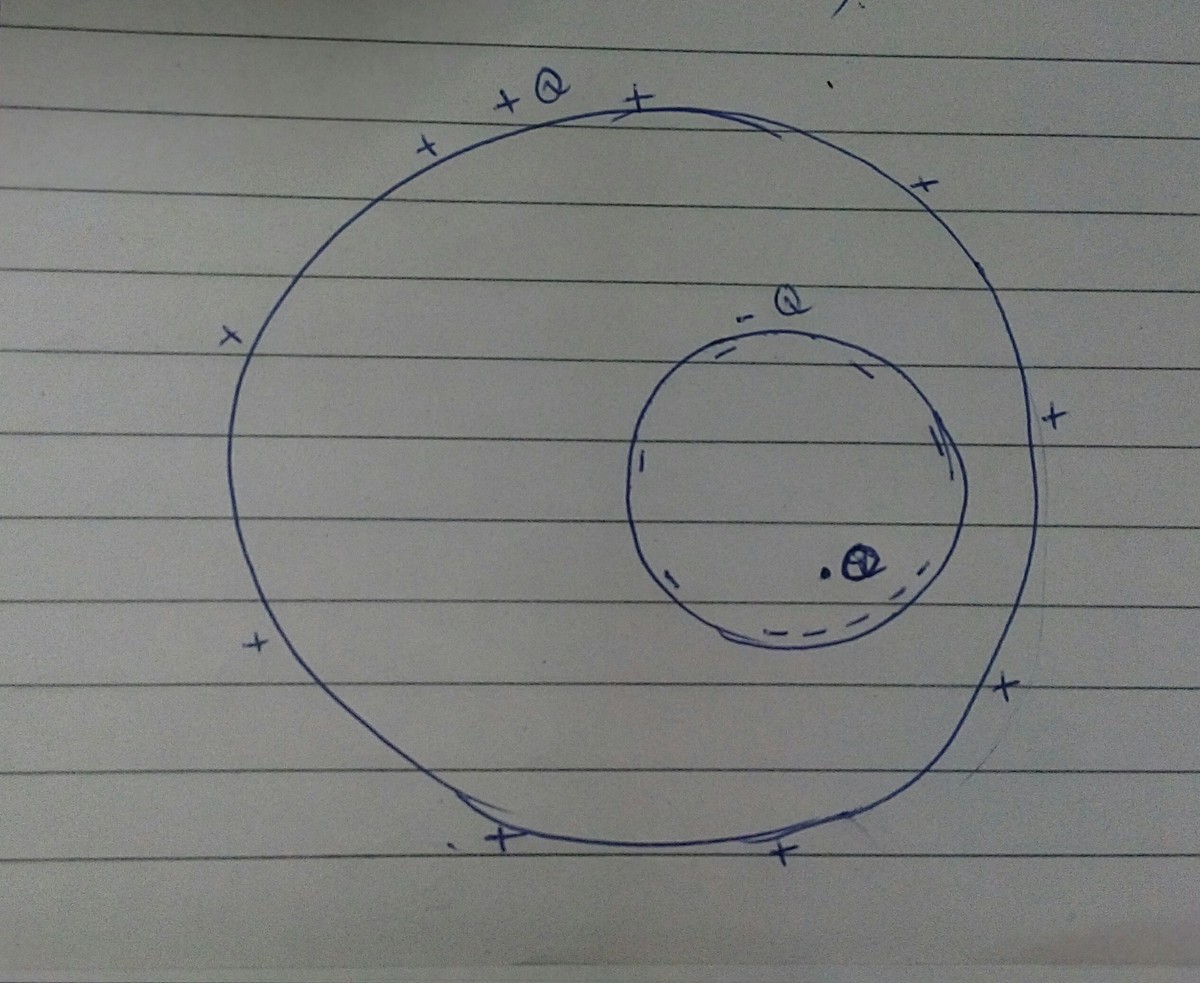Electric potential due to conductors and cavities
Electricity and Magnetism
Level
2
Inside a neutral spherical conductor, a spherical cavity is present. A charge Q is placed inside the cavity. What is the electric potential at the center (C) of the cavity?
In the diagram above,
- r 1 is the distance of the charge from the cavity's center C;
- r 2 is the radius of the cavity;
- r 3 is the distance between the centers of the sphere and cavity;
- r 4 is the radius of the sphere.
r
1
k
Q
−
r
2
k
Q
+
r
4
k
Q
r
1
k
Q
+
r
2
k
Q
+
r
4
k
Q
r
1
k
Q
−
r
2
k
Q
−
r
3
k
Q
+
r
4
k
Q
r
1
k
Q
+
r
2
k
Q
+
r
3
k
Q
+
r
4
k
Q
This section requires Javascript.
You are seeing this because something didn't load right. We suggest you, (a) try
refreshing the page, (b) enabling javascript if it is disabled on your browser and,
finally, (c)
loading the
non-javascript version of this page
. We're sorry about the hassle.
There will be three charge distributions, one is the charge Q itself and the other two will be due to induction on the surface of the cavity and the outer surface of the sphere.
On the surface of the cavity -Q charge will be induced and on the outer surface of the sphere, an equal charge +Q will appear to keep the conductor neutral. The charge induced on the surface of the cavity will be non-uniform, its density near the point charge -Q will be greater. However, the whole charge on the cavity is at a distance r 2 from the center C.
The charge appearing on the outer surface will be uniformly distributed due to the shielding effect of the cavity.
Therefore, the net potential at the center C can be calculated by the adding the potentials due to the charge Q and the induced charges.
Therefore,
V C = r 1 k Q − r 2 k Q + r 4 k Q